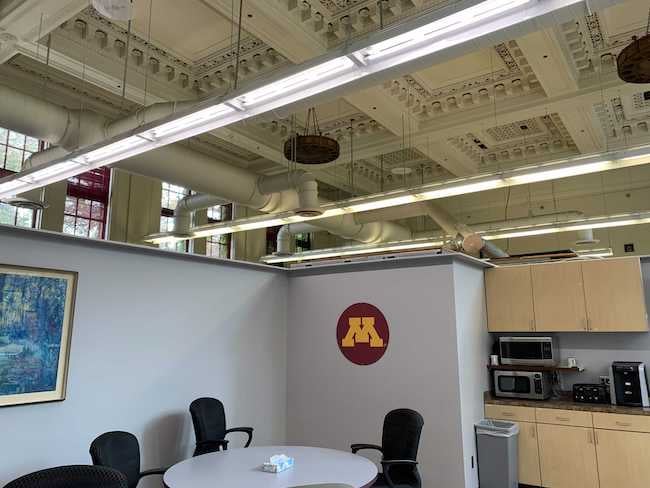Sound Management for Higher Education: Sound Masking
Buildings on university campuses come in many shapes and sizes. But each — from lecture hall to art studio, music stage to chemistry lab — can benefit from proper sound management, particularly sound masking.
What is Sound Masking?
Sound management is anything used to dampen or amplify the existing sounds in a space. Sound masking, or the dampening of noise to a positive end, is the sort of feature you are unlikely to notice when well done and is impossible to ignore when not.
The goal with sound masking is making an active acoustic effort to veil unwanted sound waves. In other words, it manipulates distracting, annoying, or even harmful noise into an audible atmosphere more conducive to human comfort and productivity.
Check out our infographic explaining how sound masking works
A typical example of a sound masking system is a white noise machine in an office setting, which provides just enough background sound to focus on tasks without being distracted by nearby conversations. Not all sound masking is created equally, however.
If you’re lucky, the technician installed these white noise machines evenly throughout the room. If not, you could be stuck in a hot spot where the artificial sound is loud and distracting by itself. Or, you may find yourself in a cold zone where the sound barely reaches you, and you can still hear others talking with enough clarity to be disruptive.
The key? Opt for planar speakers like the University of Minnesota.
Scott Hall at the University of Minnesota
The University of Minnesota recently invested in sound masking for Scott Hall on its Twin Cities campus. At nearly a century old, this gorgeous, Renaissance Revival-style building was an ornate music hall. Eventually, newer buildings took over that role, and the University converted Scott Hall into meeting spaces and offices.
The main hall’s lavish, 20-foot decorated ceiling floods the over 5,000-square-foot space with light and adds atmosphere, and was originally designed with excellent acoustics in mind. However, today’s configuration includes eight-foot, ceiling-less office walls that leave a lot of room for sound — and, more specifically, private conversations — to carry.
To address its problematic sound issues, Scott Hall received a planar loudspeaker sound masking system, making use of the solid surfaces already available in the space.
These loudspeakers use an immersive audio sound control system that harnesses planar wave physics similar to that of the soundboard of a piano or the body of a stringed instrument. Planar speakers turn any rigid, flat surfaces in a room, such as plaster walls, cube dividers, soaring windows, or desks, into acoustic wave amplifiers that radiate evenly. This technology provides a constant sound pressure level (SPL) across an entire listening space.
Retrofit Your Historic Buildings
The retrofitting of planar loudspeakers into Scott Hall shows how simple (and effective) a sound masking solution can be for colleges and universities. Despite the size of the space, this hall only required the installation of four loudspeakers. Hung from the high ceiling, these speakers look a lot like Wi-Fi boosters, are very discreet, and don’t take anything away from the magnificence of the building’s historic design.
Ultimately, the most challenging part of turning Scott Hall — and other historic spaces — into comfortable, workable spaces is physically reaching the ceiling. But in early 2020, with most staff already working from home due to COVID-19, technicians could easily set up ladders where necessary.
As COVID-19 continues to see most faculty, staff, and students working and learning remotely, this has been (and continues to be) an amazing and unique opportunity for facilities to take on significant construction and upgrade projects. And sound masking is a perfect candidate: a simple installation that can provide a quiet, distraction-free space for decades to come as spaces again fill with the clatter of daily office life.


